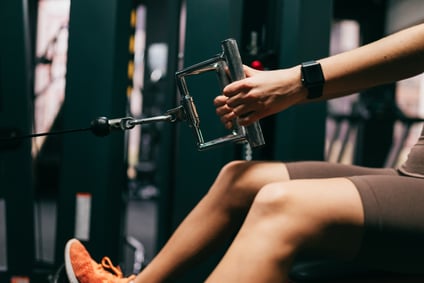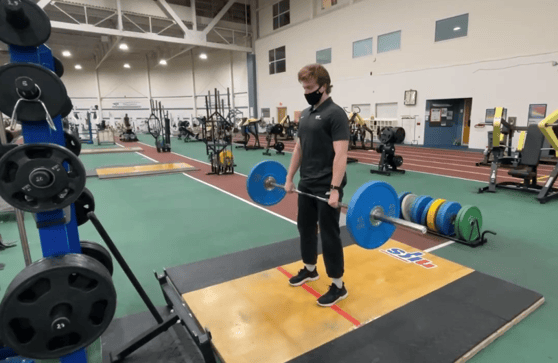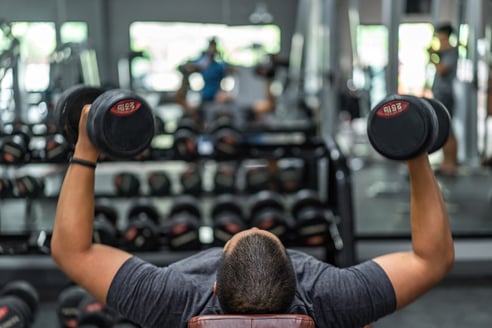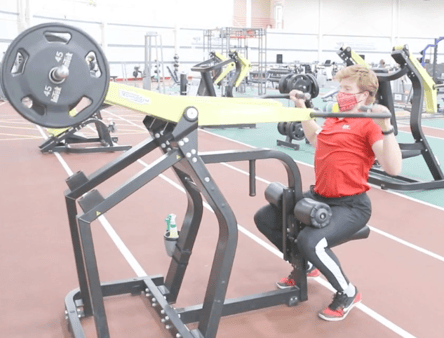 In this blog series, I have discussed four movement patterns that training should fit into. I then went on to talk about scheduling a training plan using the four movement patterns, as well as going over the pushing movement pattern. In this blog I will discuss the next upper-body movement pattern on the list, the pulling movement pattern.
In this blog series, I have discussed four movement patterns that training should fit into. I then went on to talk about scheduling a training plan using the four movement patterns, as well as going over the pushing movement pattern. In this blog I will discuss the next upper-body movement pattern on the list, the pulling movement pattern.
Pulling Movement Pattern
This movement pattern works the muscles of the latissimus dorsi, trapezius, posterior deltoid, and biceps. These muscles are all responsible for pulling objects toward our upper body. These muscle groups are essential for those of you who sit at a desk for the majority of your day job. Strengthening the muscles of your back will aid in maintaining an upright posture.
Similar to the push pattern, the pulling movement pattern can be broken up further into a horizontal and vertical pull. A horizontal pull is one in which you are pulling the weight toward your torso (for example, rows); whereas a vertical pull is one in which you are pulling the weight down from overhead (for example, pulldowns).
Pulling Movements
Lats—Horizontal
- Seated Cable Row
- One-arm Cable Row
- Bent-over Barbell Row
- One-arm DB Bent-over Row
- Chest-supported Row
- TRX or Ring Rows
- Upright Rows
Lats—Vertical
- Pullup
- Chin-up
- Lat Pulldown
- One-arm Kneeling Lat Pulldown
Trap/Posterior Deltoid
- Facepulls
- Pullaparts
- Rear Deltoid Flys
Biceps
- Barbell Curl
- DB Curl
- Cable Curl
- Preacher Curl
- Overhand Curl
Structure Your Training Program
For more information on how to properly progress and structure a training program, visit our staff at the track desk to schedule a private session. We are more than happy to help at any time, and as part of your membership here at NIFS, you receive complimentary workout programs. Our health fitness professionals tailor all programs to your fitness goals.
This blog was written by Evan James, NIFS Exercise Physiologist EP-C, Health Fitness Instructor, and Personal Trainer. To learn more about the NIFS bloggers, click here.


 As a young trainer, I struggled to find my training style. I spent the first few months trying to make my clients happy, trying to make every session as hard as I could with no real connection between workouts. Our training had no direction; they were individual workouts according to what my clients wanted to work on that day. More times than not, this turned into working out one muscle group for the entire 30 minutes. I did a good job at working one muscle group, but that did not benefit them in the long term. As I grew in my education and as a trainer, I learned that there was a better approach to training: the full-body training split
As a young trainer, I struggled to find my training style. I spent the first few months trying to make my clients happy, trying to make every session as hard as I could with no real connection between workouts. Our training had no direction; they were individual workouts according to what my clients wanted to work on that day. More times than not, this turned into working out one muscle group for the entire 30 minutes. I did a good job at working one muscle group, but that did not benefit them in the long term. As I grew in my education and as a trainer, I learned that there was a better approach to training: the full-body training split
 Let’s face it: building your own workouts isn’t always the easiest thing to do. Sure, you probably strike gold a few times a year and the exercises you choose seem to be flawless, from the balance of muscle groups worked to the flow of the routine that you get into. There is nothing better than having that program that just seems to get the job done.
Let’s face it: building your own workouts isn’t always the easiest thing to do. Sure, you probably strike gold a few times a year and the exercises you choose seem to be flawless, from the balance of muscle groups worked to the flow of the routine that you get into. There is nothing better than having that program that just seems to get the job done.  The traditional bodybuilding split of working one muscle group per day might work for the dedicated, high-level competitive bodybuilder who makes their living in the gym. But for the general population only looking to shed some unwanted pounds and improve their overall health, the traditional bodybuilding split is not ideal. Working multiple muscle groups in the same session is much more ideal because it ramps up the body’s metabolism more than working a single muscle group each day. To achieve this, we train the movement, not the muscles.
The traditional bodybuilding split of working one muscle group per day might work for the dedicated, high-level competitive bodybuilder who makes their living in the gym. But for the general population only looking to shed some unwanted pounds and improve their overall health, the traditional bodybuilding split is not ideal. Working multiple muscle groups in the same session is much more ideal because it ramps up the body’s metabolism more than working a single muscle group each day. To achieve this, we train the movement, not the muscles.